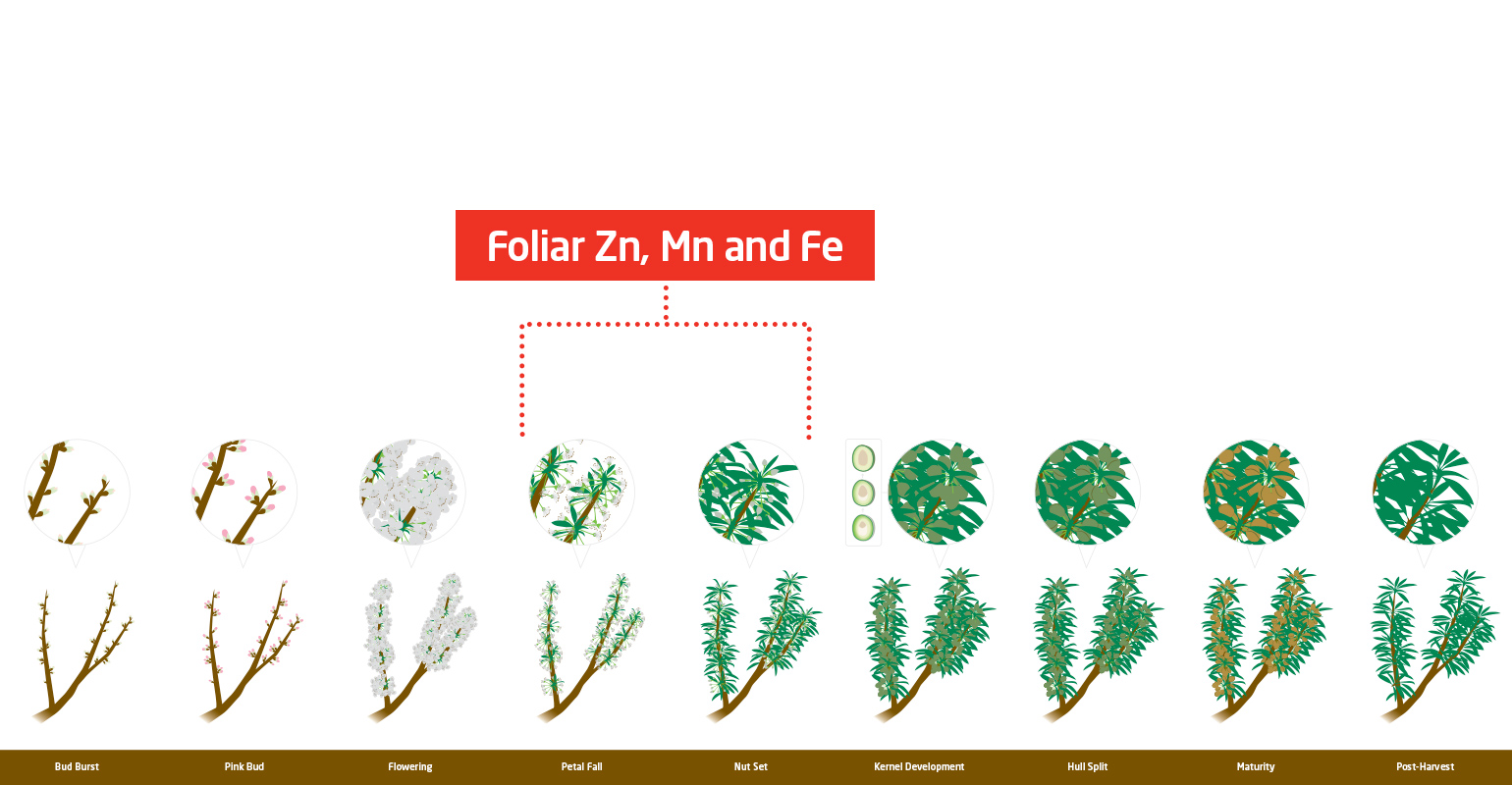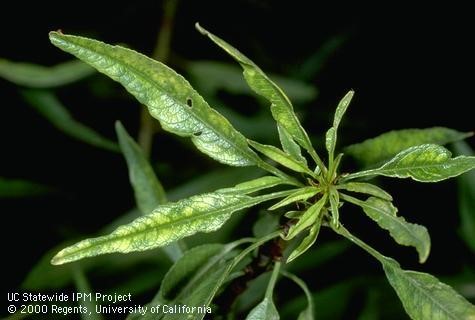Foliar application of Zn, Mn, and Fe during Spring leaf-out on Almond
March 05, 2020
Agronomics / Background
During leaf expansion in almond trees, there is a relatively short window for a high demand of several micronutrients critical to chlorophyll production, photosynthesis, and energy production. A foliar spray of these nutrients during leaf expansion will help kickstart almond trees and facilitate early carbohydrate production that will be necessary to maximize nut retention after bloom.
Zinc (Zn) is essential to many processes such as cell division, protein synthesis, and auxin production which is critical for shoot expansion. Manganese (Mn) plays a critical function in the photosynthetic process and cellular respiration. Iron (Fe) is essential for chlorophyll production making a key driver for photosynthetic efficiency. Iron is also involved in respiration and nitrogen metabolism.
Conditions Leading to Zn, Mn and Fe Deficiencies
Zinc deficiencies are common in almond plantings all over the Central Valley of California, while manganese and iron deficiencies are somewhat less common. For all three nutrients, deficiencies are most often associated with high soil pH levels which inhibit uptake. High soil phosphate levels have also been shown to induce zinc deficiencies. Root uptake of Zn, Mn, and Fe is an active process that will occur more readily in warmer soils. Early leaf expansion for almonds often takes place when soil temperatures are still relatively low and micronutrient uptake is generally limited. Deficiencies of Zn, Mn and Fe will all lead to some level of leaf chlorosis in the spring. Zinc deficiency will also be accompanied by stunted shoot growth and small, narrow leaves.
Desired Zn, Mn, and Fe Tissue Test Values
The most accurate time to determine micronutrient tissue levels is generally mid-July. As a result, when evaluating the need for a spring micronutrient application, you should consider your tissue levels from last summer. Zinc is considered deficient in almonds below 15 ppm, but often 25 ppm or less will respond to foliar sprays. If you made a foliar zinc application at post-harvest and/or pre-bloom, including Zn in your leaf-out spray may not be beneficial.
Manganese deficiencies occur around 20 ppm in mid-July samples. However if your values were at 30 ppm or below, a spring foliar application may improve plant performance.
There are not yet good standards for Fe tissue values in almonds. If levels last summer were below 50 ppm, consider including iron in your leaf-out spray. Especially if you have seen leaf chlorosis in prior seasons.
Key Application Timings and Rates
Due to the role these micronutrients play in chlorophyll production, photosynthesis, and leaf expansion, vegetative expansion is a good time to make a foliar application. This window typically starts around petal fall and should continue through April. Young leaves tend to have less cuticular waxes, so foliar nutrient uptake should be very efficient at this time. Zinc, iron and especially manganese have limited phloem mobility so foliar applications that directly contact the leaves that require these nutrients is very effective.
BRANDT Products
BRANDT® Manni-Plex® line of sugar alcohol-complexed products are a great fit for in-season foliar applications on almonds:
- BRANDT Manni-Plex Zn
- BRANDT Manni-Plex Mn
- BRANDT Manni-Plex Fe
These highly effective liquid foliar nutrient formulations fit well into leaf-out sprays. Generally rates around 1-2 quarts per acre work well on almonds and can be tank-mixed with any fungicides or insecticides.

Almond Zinc Deficiency

